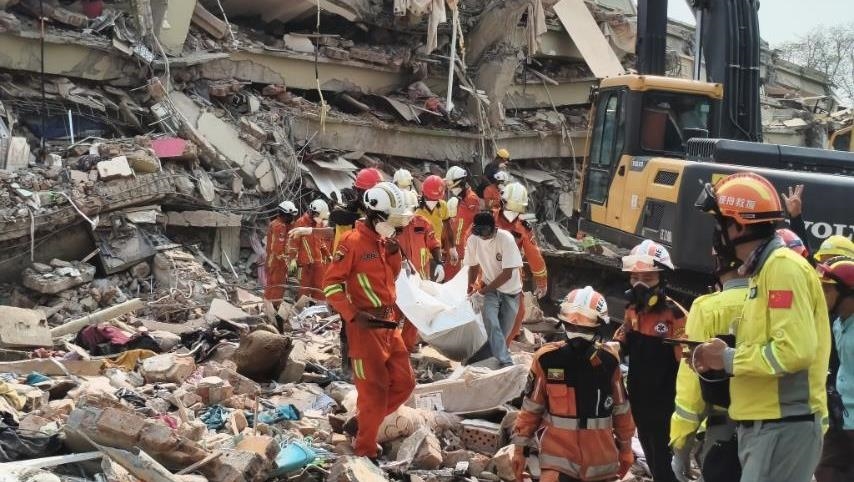China Utilizes DeepSeek AI for Translation Amidst Aid Efforts for Myanmar Earthquake Relief

China’s DeepSeek AI: Transforming Disaster Relief Efforts in Myanmar
Introduction to DeepSeek AI
In response to the recent earthquakes in Myanmar, China has leveraged its advanced DeepSeek artificial intelligence (AI) technology to facilitate translation and communication between aid workers and local communities. This innovative tool has proven crucial in streamlining rescue operations and effectively addressing the needs of those affected by the natural disaster.
Overview of the Earthquake Situation in Myanmar
Myanmar experienced a series of devastating earthquakes recently, which prompted a significant humanitarian response from various nations and organizations. These earthquakes not only caused physical destruction but also severely impacted the communication channels crucial for coordinating aid and recovery efforts.
Key Impacts of the Earthquake:
- Extensive damage to infrastructure
- Displacement of thousands of individuals
- Immediate need for humanitarian assistance
The Role of DeepSeek AI in Disaster Relief
DeepSeek AI is a state-of-the-art translation platform developed in China that provides real-time translation services. This technology allows aid organizations to communicate more effectively with local populations, ensuring that help reaches those who need it most.
Specific Functions of DeepSeek AI:
- Real-Time Translation: Converts spoken and written language instantly, bridging the communication gap between aid workers and local communities.
- User-Friendly Interface: Designed to be easily accessible, enabling non-technical users to utilize the platform for communication.
- Multi-Language Support: Supports multiple languages, making it versatile for various linguistic groups present in disaster-struck areas.
Implementation of DeepSeek AI in Myanmar Relief Operations
Various aid groups and organizations have adopted the DeepSeek AI platform during their operations in Myanmar. This move has been praised for enhancing the efficiency of communication on the ground.
Notable Examples of Use:
- Collaboration with Local Translators: Local experts, including teachers proficient in Burmese, have been integrated into the relief teams. Their knowledge, combined with the technology, has improved the effectiveness of rescue efforts.
- Emergency Cases Coordination: The AI-driven platform allows for rapid updates on the situation, enabling aid workers to respond to urgent needs promptly.
Success Stories from the Ground
Multiple reports highlight the positive impact of DeepSeek AI in recent rescue operations. For instance, teachers from Tianjin who are fluent in Burmese collaborated with rescuers to provide critical information during the response process. Their support, powered by AI translation capabilities, has played a vital role in helping teams navigate through challenges more effectively.
Broader Implications of AI in Humanitarian Aid
The successful application of DeepSeek AI in Myanmar showcases the potential benefits of technology in future disaster response efforts. By enhancing communication, AI can help streamline operations, clarify needs, and improve the distribution of aid resources.
Potential Future Developments:
- Enhanced AI Features: Continuous improvements in AI technology could lead to even more sophisticated capabilities, such as predictive analytics for disaster management.
- Global Adoption: Other countries may consider implementing similar technologies to aid in their own disaster relief strategies, making communication and resource distribution more efficient during emergencies.
Conclusion
China’s DeepSeek AI represents a significant advancement in the field of disaster relief through its innovative approach to overcoming language barriers. As technology evolves, its potential to save lives and facilitate timely and effective emergency responses will undoubtedly continue to grow.





